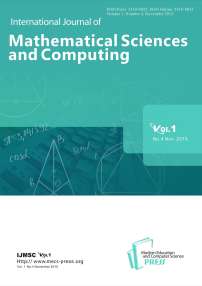Cover page and Table of Contents. Vol. 1 No. 4, 2015, IJMSC
Бесплатный доступ
ID: 15010110 Короткий адрес: https://sciup.org/15010110
Статьи выпуска 4, 2015 International Journal of Mathematical Sciences and Computing(IJMSC)
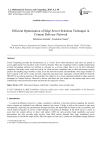
Efficient Optimization of Edge Server Selection Technique in Content Delivery Network
Статья научная
Cloud Computing provides the infrastructure as a "Cloud" from which businesses and users are permit to access applications from anywhere in the world on demand. Thus, the computing world is rapidly transforming towards developing software for millions to consume as a service, rather than to run on their individual computers. But many users could not satisfy on cloud services completely due to their uncovering security purpose for handling large numbers of data. Even the network becomes uncontrollable, when large numbers of user's request to the server create network congestion and data losses vigorously. Content Delivery Network OR CDN is an eminent solution of this problem. Our objective is to create optimized method for edge selection technique in Content Delivery Network to deliver and direct the user request to the nearest edge server and establish the connection between them and transfer the respective content
Бесплатно
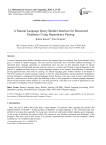
A Natural Language Query Builder Interface for Structured Databases Using Dependency Parsing
Статья научная
A natural language query builder interface retrieves the required data in structured form from database when query is entered in natural language. The user need not necessarily have sufficient technical knowledge of structured query language statements so nontechnical users can also use this proposed model. In natural language parsing, getting highly accurate syntactic analysis is a crucial step. Parsing of natural languages is the process of mapping an input string or a natural language sentence to its syntactic representation. Constituency parsing approach takes more time for parsing. So, natural language query builder interface is developed in which the parsing of natural language sentence is done by using dependency parsing approach. Dependency parsing technique is widespread in natural language domain because of its state-of-art accuracy and efficiency and also it performs best. In this paper, the buffering scheme is also proposed for natural language statements which will not load the whole sentence if it was done previously. Also there was a need of generalized access to all tables from database which is handled in this system.
Бесплатно
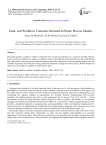
Data- and Workflow Customer-Oriented Software Process Models
Статья научная
This paper presents a dataflow model to control the flow of data in each phase of a customer-oriented software process model. In addition, we suggest a workflow model to describe the transaction between the model phases, and a role model to govern the personnel participation and roles. Our goal is to develop models that involve the customer frequently and effectively during project development. Testing the models using CHAOS Report and shows that our models are capable of achieving this goal.
Бесплатно
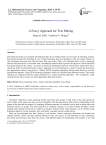
A Fuzzy Approach for Text Mining
Статья научная
Document clustering is an integral and important part of text mining. There are two types of clustering, namely, hard clustering and soft clustering. In case of hard clustering, data item belongs to only one cluster whereas in soft clustering, data point may fall into more than one cluster. Thus, soft clustering leads to fuzzy clustering wherein each data point is associated with a membership function that expresses the degree to which individual data points belong to the cluster. Accuracy is desired in information retrieval, which can be achieved by fuzzy clustering. In the work presented here, a fuzzy approach for text classification is used to classify the documents into appropriate clusters using Fuzzy C Means (FCM) clustering algorithm. Enron email dataset is used for experimental purpose. Using FCM clustering algorithm, emails are classified into different clusters. The results obtained are compared with the output produced by k means clustering algorithm. The comparative study showed that the fuzzy clusters are more appropriate than hard clusters.
Бесплатно

